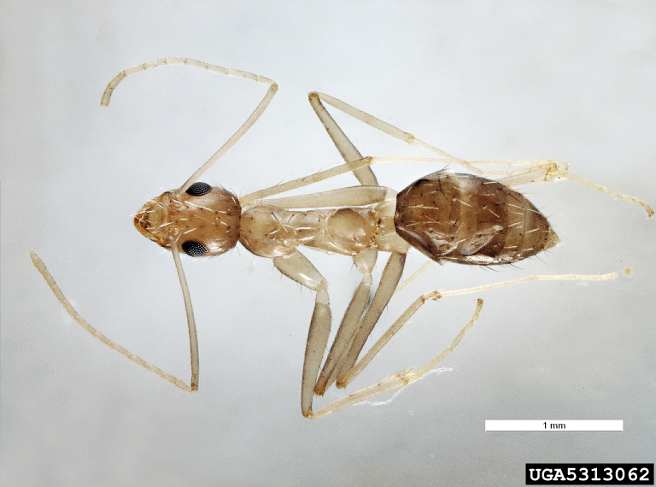The Crazy Ants (or Longhorn Ant) is believed to be a native of Asia and Africa and it is the most widespread ant on the planet – hitchhiking aboard all forms of human transport. It has bulging eyes, rows of thick white hair (setae), the body often has faint blue iridescence and is not difficult to identify. With its appearance of running aimlessly around with rapid and erratic movements, it was given the name Crazy Ant.
Habits
The Crazy Ant prefers to feed on animal matter and insects – living or dead, however, it will feed on seeds, honeydew, fruits, sweets and kitchen grease and scraps. Often Crazy Ant nests are far away from its foraging area making them hard to find and difficult to control.
Habitat
The Crazy Ant is highly adaptable – living in both very dry and moist environments outdoors and indoors. Crazy Ants nest in trash, cavities in plants and trees, rotten wood; in soil under objects like firewood, landscape timbers, stones, logs, mulch and abandoned debris. They can also be found in rain gutters, under and in potted plants, and in cracks and crevices. The Crazy Ant will gain entry to a building through holes or cracks.
Threats
The Crazy Ant has no stinger but may bite if disturbed. It will curve its abdomen forward to inject a formic acid secretion from its acidopore into the wound. It is also known to transport pathogens in hospitals.
Prevention
To prevent entry into a structure, seal all internal and external cracks and crevices around the home and utility lines with a good caulk and apply weather stripping to doors and garages. Store woodpiles away from the house or garage. Trim shrubs/trees away from the home. Good housekeeping practices and cleanliness in the home – eliminating all food sources.
|

